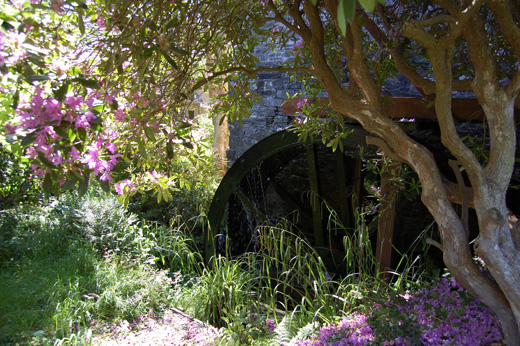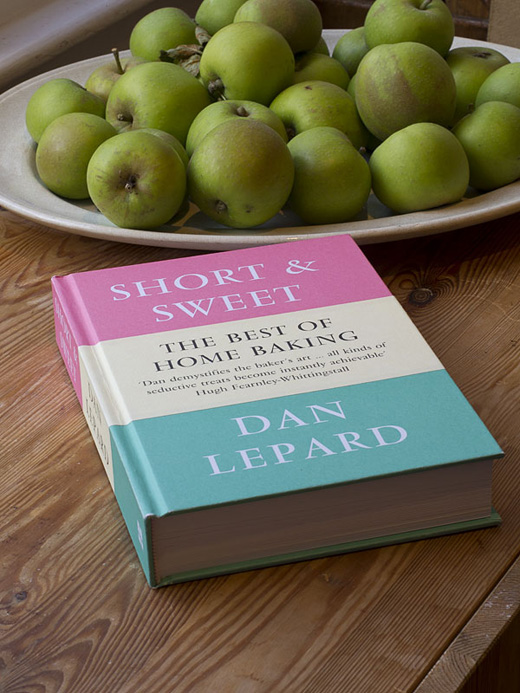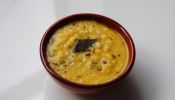I have little to say about this loaf other than, wow I never thought I would make a loaf with English Spelt using my free-form rising method and result in a rise like this. Last year I attempted sourdough using English white spelt I had bought in my local supermarket and had disastrous results with a flatten loaf. Following that experience I bought some white spelt from Shipton Mill, which came from Germany, I had better results but wasn’t overly impressed with 100% spelt loaves. Patrick from Bakery Bits sent me this spelt flour he sells from Foster’s Mill in Cambridge for me to try and I made it yesterday.
I mixed the dough in the morning, and folded it twice over a course of 2-3 hours, shaped it and left to rise for 2 hours.
You can see how the dough was holding itself nicely once shaped. I did wonder at this point if I would return to a flat pancake. I gave it a small amount of support around it just in case.
By the time 2 hours had passed (room temperature) I could see from the tearing on the side it was time for the oven to be turned on.
I wasn’t expecting such a big “puff” in the oven, was quite taken back by the spring it had, creating the lovely rip effect on the slash.
OK, I take it all back about English spelt. This variety, Alkor, chosen by Jonathon at Foster’s Mill has certainly restored my faith in 100% sourdough English spelt loaves.
I now have to go back to my other spelt flours and see if it was down to my skill in not producing a loaf I was happy with, maybe it was me, after all I managed to produce a good loaf with freshly milled amaretto at 10.5% protein…
What I liked about this particular variety was the light texture it had. Some white spelts can feel quite heavy when chewing but not this one, has a close texture to that of a roller mill white flour.
My toast for this morning’s breakfast.
Loaf
- 500g flour
- 300g water (temperature 30C, was cold day)
- 200g levain (fed 25g levain*, 100g flour, 100g water, overnight)
- 9g salt
Made as I described above.
*used white roller mill organic flour












































{ 8 comments… read them below or add one }
Is the white spelt similar to white flour in terms of extraction rate?
I am afraid I have an explanation for how your results are so different for this spelt than others you have tried – which may not be what you or Jonathan Cook at Foster’s Mill will like to hear. Modern spelt varieties have increasingly been crossed with “tender wheat” – “bread wheat” – Triticum aestivum to produce better baking results.
If you check the last paragraph in this document
http://www.brockwell-bake.org.uk/docs/How_much_wheat_is_in_spelt_flour.pdf
you will read
“However, the limits of this detection method are younger spelt varieties which have been crossbred with wheat. They have the external properties of spelt such as the hulls or brittle rachis but also contain the DNA sequence of the gamma gliadin gene typical for wheat. One of these newer varieties is the biodynamic variety Alkor from Switzerland which according to this analysis would be classified as wheat and not as spelt.”
In my opinion there are several questions to do with the trade in spelt flour. Its typically much more expensive than bread wheat flour, the reasoning being that it it is not free threshing, it needs to be de-hulled prior to milling, but this doesn’t need be so expensive an operation if one has the right machinery (I think Foster’s Mill probably has to get others to do this for them, so they are paying extra themselves) – not enough to justify sometimes being twice the price anyway. It then to the consumer has this whole allure, also justifying the price maybe, that it does not have “bread wheat” gluten in it – which as the above quote spells out is increasingly not the case. Numerous people have told me flavour is typically great though, but whether this is in comparison to all “bread wheat” or rather in comparison to most modern “bread wheat” varieties I wonder?
hi Sam – I’ll pose the question to Jon.
As far as flavour with spelt is concern Andy, there will be some varieties that will be “tastier” than others and some varieties better “performers” just like you get with any other kinds of grains including common wheat. If alkor has been crossbred it would explain the performance of it, but I’ll leave to others to decide in which camp it should lie.
Whatever spelt it is, be it modern or ancient varieties it should never be sold as “gluten-free” as that would be incorrect. However, there are people who seem to tolerate spelt better than common wheat, the same way as some people can not tolerate modern wheat varieties but can tolerate Roland’s ancient varieties. The individual is the only one who can decide, and if that was the case with me then I would would pay the extra price to buy something I could tolerate and enjoy.
It seems Alkor is a straight cross between a bread wheat (Avalon) and a spelt (Altgold) made by the Swiss biodynamic wheat breeder Peter Kunz – early in his career. As such it is rated 50/50 bread wheat/spelt by the German Demeter Association as documented here http://www.alkalize-shop.de/content/wissenswertes-dinkel.htm and elsewhere.
Whether this really means its a risk to wheat intolerant people is another matter as its not clear wheat gluten composition is the causal factor in various forms of wheat intolerance – the Peter Kunz Institute has ongoing research http://www.getreidezuechtung.ch/index.php?article_id=432 into this subject.
My own feeling is that a major factor in the perception that (modern, crossed) spelt is an option for wheat intolerant people is that for the time being bread from it is typically produced by sourdough fermentation (which in my experience means a very high proportion of wheat intolerant people can eat in any case when made with bread wheat) but this won’t necessarily remain true.
Andy – all spelt has gluten it does not matter how far back it goes, there is no such thing as a gluten-free spelt even going back to stone age. All spelt has gliadin and glutenin. With regards to intolerance and whether someone can tolerate one food or another will be purely down to the individual. Trust me, it’s something I know a lot about.
The problem surely comes when people read spelt marketing such as this http://www.sharphampark.com/about-spelt/spelt-facts – particularly the statement that “The key difference between spelt and wheat is the molecular structure of the protein in the gluten, which is shorter and more brittle and therefore easier for the body to break down and digest” and then as a result purchase (at a premium price) a spelt product that is in fact made from a wheat/spelt hybrid? Regardless of the health issues I haven’t come across any marketing for spelt that is open about the differences between ancient and more modern spelt lines. Your own experiments have demonstrated that there is indeed a difference – specifically of gluten structure.
Andy – Keep an eye out for an allergy post coming up, it’s very overdue on here but hopefully it won’t take long for me write it and put it up. It will explain how allergies/intolerances work.
{ 1 trackback }